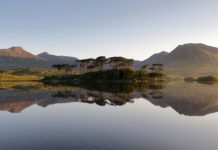Pakistan, one of the world’s greatest surprises, has some of the Subcontinent’s most stunning forts, mosques, and ancient monuments, as well as the world’s largest mountain glacier and the dazzling Indus River. The warmest people you’ll ever meet live there, and it serves as a cultural link between Central Asia and India.
Yet, outside of Pakistan, opinions are divided. Despite the nation’s many political, economic, and security issues, there have been significant changes in recent years about security. Though you can be sure of an amazing welcome, this is the kind of place where you need to do your homework before you go there on a PIA flight. Here are some basic travel guidelines to get you started with your planning.
1. A Pakistani travel visa is now simple to get online
Pakistani visas were notoriously difficult to get before 2019. Earlier it could only be obtained by sending your passport and supporting documentation to the closest embassy. Everything changed when the e-visa system was introduced. Online applications for Pakistan tourist visas are now available to residents of more than 170 countries. In many cases, all that is required is verification of a hotel reservation and an itinerary.
2. Travelling alone is simpler than it seems
Pakistan has simplified independent travel along with visa modifications. Goodbye to the days when outsiders could not enter many valleys. Many parts of Pakistan are now accessible to tourists without requiring an NOC (no-objection certificate). While there are certainly plenty of tour companies to choose from these days, independent travellers and those on a budget are generally free to see Pakistan at their own pace, with a few notable exceptions.
3. Pakistan is safe, pleasant, and hospitable in many areas
Despite political and economic turbulence, the World Crime Index puts Lahore, Punjab, as more secure than Paris or Berlin. The military has made great strides in making cities and even rural regions more secure places to live and visit. While it’s still advisable to monitor the news and official travel warnings, safety has improved, especially in Lahore and Karachi, the largest metropolis in the nation.
4. Ground travel is far cheaper than air travel
Pakistan has huge distances. It takes almost 16 hours by bus from Islamabad to hilly Gilgit-Baltistan and much longer to Karachi. Still, if you want to see the nation, a car is your best chance. Jeeps are the only way to reach many of Pakistan’s most picturesque and out-of-the-way locations, and domestic flights are far more expensive, costing over $100 each trip.
5. Simply wear a shalwar kameez
The shalwar kameez may be the most comfy outfit in the world. Consider loose, lightweight slacks, a long dress-like top, and a dupatta for women. A majority of Pakistanis wear the shalwar kameez, especially in liberal metropolitan cities. Pakistan is conservative, therefore travellers should observe cultural values even if there is no clothing requirement.
6. Hospitality is ingrained in Pakistani culture
Pakistanis are more than just “friendly people”—they extend hospitality to a different level. There is a strong cultural expectation that visitors are a blessing from Allah and should be treated accordingly. Be prepared to have a full lunch at a family’s house after a brief talk. It’s also usual for these strangers to insist on offering you somewhere to stay.
7. English is widely spoken
English is spoken practically everywhere in Pakistan since Britain colonized the country during its Indian Empire. It shouldn’t be anticipated, however. After Pakistan gained independence in 1947, English became less widespread in rural areas. Public schools and institutions still teach it. It would be helpful to have an Urdu dictionary on hand, but it is still possible to communicate even without a shared vocabulary.
8. Pakistan has many overland borders
Lahore, Karachi, and Islamabad are Pakistan’s main international airports, however, all visas allow overland access. You may enter Pakistan at many sites. The Wagah Border between Lahore and Amritsar is popular and simple to cross.
9. Always get a local SIM card
After you arrive in Pakistan, getting a local SIM card should be your first priority. Pakistan has various providers, and even distant areas have 4G connectivity. SIM cards are only available to foreigners at the airport, where they are costly, or in franchise stores. The main providers are Jazz, Zong, Telenor, and Ufone.
10. Weather varies by location
Winter brings heavy snow and frigid temperatures to Pakistan’s mountainous North. Access to several important highways and high-altitude passes is also obstructed. Peak mountain viewing is from April to November. April sees cherry blossoms, while mid-October brings autumn colours.












